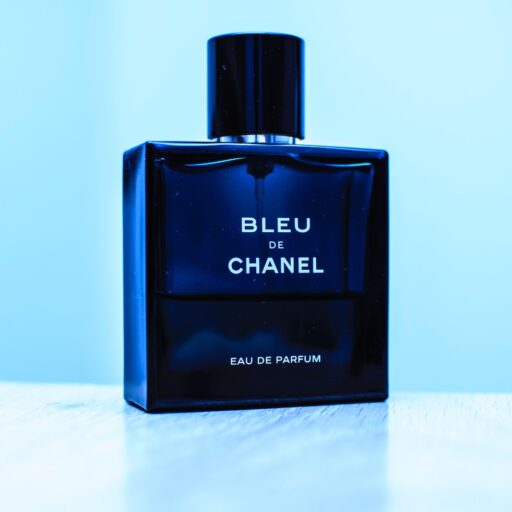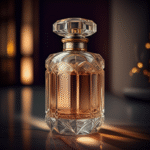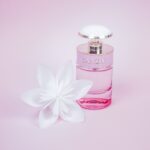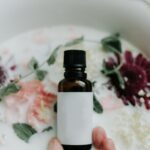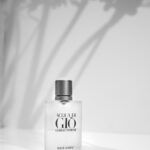Support our educational content for free when you purchase through links on our site. Learn more
What Are Fragrance Brands? Discover 10 Iconic Names That Define the Scented World! 🌟

Have you ever caught a whiff of a fragrance that instantly transported you back to a cherished memory? Perhaps it was the scent of your grandmother’s favorite perfume or the alluring aroma that lingered in the air during a romantic evening. Fragrance brands are not just about selling scents; they are the architects of our memories and emotions. In this article, we delve deep into the captivating world of fragrance brands, exploring their history, the artistry behind perfume-making, and the key players that have shaped the industry.
Did you know that the fragrance industry is a multi-billion dollar market, with new brands and scents emerging every year? In fact, as of 2023, the global fragrance market was valued at approximately €8,418 million! This article will introduce you to 10 iconic fragrance brands that have left an indelible mark on the olfactory landscape. Whether you’re a fragrance aficionado or just starting your scent journey, we have something for you!
Key Takeaways
- Fragrance brands are storytellers: They craft scents that evoke emotions and memories, making them integral to our experiences.
- Diverse categories: There are two main types of fragrance brands—niche and designer—each offering unique scent profiles and experiences.
- Artistry in perfumery: The process of creating a fragrance involves skilled perfumers, known as “noses,” who blend raw materials to create harmonious scents.
- Sustainability matters: Many fragrance brands are adopting eco-friendly practices, focusing on sustainable sourcing and packaging.
- Trends to watch: The future of fragrance includes personalization, technology integration, and a growing demand for clean and sustainable options.
Ready to explore the world of fragrance brands? 👉 Shop iconic scents from top brands like Chanel, Dior, and Guerlain today! 🌸✨
Table of Contents
- Quick Tips and Facts
- Fragrance Brands: A Deep Dive into the World of Scents
- The Evolution of Fragrance Brands: A Historical Perspective
- Top 10 Iconic Fragrance Brands You Should Know
- Niche vs. Designer Fragrance Brands: What’s the Difference?
- The Art of Perfume Making: Behind the Scenes of Fragrance Brands
- Sustainability in Fragrance Brands: The Green Revolution
- Fragrance Brand Collaborations: When Scents Meet Style
- The Future of Fragrance Brands: Trends to Watch
- How to Choose the Right Fragrance Brand for You
- Conclusion
- Recommended Links
- FAQ
- Reference Links
Quick Tips and Facts (#quick-tips-and-facts)
- Fact: Did you know that the ancient Egyptians were some of the first to use perfume? They even had a god of perfume! (Source: National Geographic)
- Tip: Store your perfumes in a cool, dark place to preserve their scent. Avoid direct sunlight and heat.
- Fact: The fragrance industry is a multi-billion dollar market, with new perfume names constantly emerging. (Source: Statista) Check out our article about perfume names list for more information.
- Tip: Apply perfume to pulse points like your wrists, neck, and behind your ears for a longer-lasting scent.
Fragrance Brands: A Deep Dive into the World of Scents (#fragrance-brands-a-deep-dive-into-the-world-of-scents)
Fragrance brands, much like artists with their palettes, craft olfactory masterpieces that evoke emotions, memories, and aspirations. From the classic elegance of Chanel No. 5 to the modern sensuality of Tom Ford’s Black Orchid, these brands weave intricate stories through carefully selected notes and accords. But what makes a fragrance brand truly stand out? At Perfume Brands™, we believe it’s a combination of artistry, innovation, and a deep understanding of their clientele. We’ve explored countless Fragrance Reviews to bring you the inside scoop.
The Power of Scent
Fragrances have the remarkable ability to transport us back in time, evoke powerful emotions, and even influence our moods. Think about a scent that reminds you of a loved one, a special occasion, or a favorite place. That’s the magic of fragrance!
The Role of Fragrance Brands
Fragrance brands play a crucial role in curating these olfactory experiences. They are the storytellers, the artists, and the innovators who bring us the scents that define our moments and memories. They carefully select ingredients, blend them with precision, and package them in exquisite bottles that reflect the essence of the fragrance within.
The Evolution of Fragrance Brands: A Historical Perspective (#the-evolution-of-fragrance-brands-a-historical-perspective)
The history of fragrance brands is a fascinating journey through time, from ancient rituals to modern-day luxury. Early civilizations used fragrances for religious ceremonies, medicinal purposes, and personal adornment. Over the centuries, perfumery evolved from a craft to an art form, with fragrance brands emerging as key players in shaping the world of scents. Officine Universelle Buly, founded in 1803, as mentioned by LVMH, exemplifies this rich history. (LVMH)
From Ancient Rituals to Modern Luxury
The use of fragrances dates back thousands of years. Ancient Egyptians used fragrant oils and resins in their religious ceremonies and burial rituals. The Greeks and Romans further developed perfumery, creating elaborate perfumes and scented cosmetics. The Renaissance saw a resurgence of interest in fragrance, with the development of new techniques and ingredients.
The Rise of Modern Fragrance Brands
The 19th and 20th centuries witnessed the rise of modern fragrance brands, such as Guerlain, Chanel, and Dior. These brands transformed perfumery into a luxury industry, creating iconic scents that continue to captivate us today. They also pioneered new marketing and distribution strategies, making fragrances accessible to a wider audience.
Top 10 Iconic Fragrance Brands You Should Know (#top-10-iconic-fragrance-brands-you-should-know)
Here at Perfume Brands™, we’ve compiled a list of 10 iconic fragrance brands that have made their mark on the world of scents. These brands represent a diverse range of styles, from classic elegance to modern innovation. We’ve included links to our in-depth Fragrance Reviews and Luxury Brands categories for further exploration.
- Chanel: Known for timeless classics like No. 5 and Coco Mademoiselle.
- Dior: Home to iconic fragrances like J’adore and Miss Dior.
- Guerlain: A legendary perfumery house with a rich history and iconic scents like Shalimar.
- Tom Ford: A modern brand known for its bold and sensual fragrances.
- Yves Saint Laurent: A fashion powerhouse with a range of iconic fragrances like Opium and Black Opium.
- Giorgio Armani: Creator of sophisticated fragrances like Acqua di Gio and Si.
- Hermès: A luxury brand known for its elegant and refined fragrances.
- Lancôme: A popular brand with a wide range of fragrances, including La Vie Est Belle.
- Givenchy: Home to classic fragrances like Gentleman and L’Interdit.
- Creed: A niche fragrance house known for its high-quality and luxurious scents.
👉 CHECK PRICE on:
- Chanel No. 5: Amazon | Chanel Official
- Dior J’adore: Amazon | Dior Official
- Guerlain Shalimar: Amazon | Guerlain Official
Niche vs. Designer Fragrance Brands: What’s the Difference? (#niche-vs-designer-fragrance-brands-whats-the-difference)
The world of fragrance is often divided into two main categories: niche and designer. Understanding the difference between these categories can help you navigate the vast landscape of scents and find the perfect fragrance for you. Our Perfume Guides offer further insights into this topic.
Niche Fragrance Brands
Niche fragrance brands are typically smaller, independent companies that focus on creating unique and artistic fragrances. They often use high-quality ingredients and unconventional scent combinations. Creed, as mentioned above, is a prime example of a niche fragrance house.
Designer Fragrance Brands
Designer fragrance brands are usually associated with fashion houses or luxury brands. They often produce a wider range of fragrances, catering to a broader audience. Chanel, Dior, and Yves Saint Laurent are examples of designer fragrance brands. L’Oréal’s success with Yves Saint Laurent fragrances, particularly MYSLF, highlights the power of designer brands in attracting younger consumers. (L’Oréal Finance)
The Art of Perfume Making: Behind the Scenes of Fragrance Brands (#the-art-of-perfume-making-behind-the-scenes-of-fragrance-brands)
Creating a fragrance is a complex and intricate process, involving a blend of art, science, and creativity. Fragrance brands employ skilled perfumers, often called “noses,” who have a deep understanding of scent composition and the ability to create harmonious blends. Maison Francis Kurkdjian’s support of The Perfumer’s Garden at the Trianon estate underscores the importance of cultivating fragrance experiences. (LVMH)
From Raw Materials to Finished Fragrance
The perfume-making process begins with the selection of raw materials, which can include natural ingredients like flowers, herbs, and spices, as well as synthetic molecules. These ingredients are carefully blended to create the desired scent profile. The fragrance is then aged and tested to ensure its quality and longevity.
The Role of the “Nose”
The “nose” is the artist behind the fragrance. They have an exceptional sense of smell and a deep understanding of fragrance construction. They work with a palette of ingredients, blending them with precision to create unique and captivating scents.
Sustainability in Fragrance Brands: The Green Revolution (#sustainability-in-fragrance-brands-the-green-revolution)
As consumers become increasingly aware of environmental issues, sustainability is becoming a key focus for fragrance brands. Many brands are adopting eco-friendly practices, from sourcing sustainable ingredients to reducing packaging waste. Guerlain’s partnership with Lee Ufan for the Art & Environment Prize reflects this growing commitment to sustainability. (LVMH)
Sustainable Sourcing
Many fragrance brands are now sourcing their ingredients from sustainable farms and producers. This helps to protect biodiversity and ensure the long-term viability of natural resources.
Eco-Friendly Packaging
Fragrance brands are also reducing their environmental impact by using eco-friendly packaging materials, such as recycled glass and paper. Some brands are even offering refillable bottles to minimize waste.
Fragrance Brand Collaborations: When Scents Meet Style (#fragrance-brand-collaborations-when-scents-meet-style)
Fragrance brands often collaborate with fashion designers, celebrities, and other artists to create limited-edition scents and marketing campaigns. These collaborations can bring fresh perspectives to the world of fragrance and introduce new audiences to the art of scent.
Fashion and Fragrance
The worlds of fashion and fragrance are often intertwined. Many fashion designers have their own fragrance lines, creating scents that complement their clothing collections. These collaborations can result in unique and stylish fragrances that reflect the designer’s aesthetic.
Celebrity Fragrances
Celebrity fragrances have become increasingly popular in recent years. These collaborations can bring a new level of excitement and glamour to the fragrance industry. However, the quality of celebrity fragrances can vary widely, so it’s important to do your research before purchasing.
The Future of Fragrance Brands: Trends to Watch (#the-future-of-fragrance-brands-trends-to-watch)
The fragrance industry is constantly evolving, with new trends emerging all the time. Here are a few trends to watch in the future of fragrance brands:
Personalization
Personalized fragrances are becoming increasingly popular, allowing consumers to create their own unique scents. This trend is driven by a desire for individuality and self-expression.
Technology and Fragrance
Technology is playing an increasingly important role in the fragrance industry. From virtual scent experiences to AI-powered fragrance creation, technology is transforming the way we experience and interact with scents.
Clean and Sustainable Fragrances
The demand for clean and sustainable fragrances is growing rapidly. Consumers are looking for fragrances made with natural ingredients and eco-friendly packaging. This trend is driving innovation in the fragrance industry, with brands developing new sustainable practices and ingredients. L’Oréal’s focus on Green Science technology, as seen in their Rénergie H.P.N. 300-Peptide Cream by Lancôme, exemplifies this trend. (L’Oréal Finance)
How to Choose the Right Fragrance Brand for You (#how-to-choose-the-right-fragrance-brand-for-you)
With so many fragrance brands to choose from, finding the right one for you can feel overwhelming. Here are a few tips to help you navigate the world of scents and discover your signature fragrance:
Consider Your Personal Style
Your fragrance should reflect your personal style and preferences. Do you prefer classic and elegant scents or bold and modern ones? Do you gravitate towards floral, woody, or oriental notes?
Explore Different Fragrance Families
Fragrances are categorized into different families, such as floral, oriental, woody, and fresh. Exploring different fragrance families can help you discover new scents and identify your preferences. Our Perfume Guides can help you learn more about fragrance families.
Test Fragrances on Your Skin
It’s important to test fragrances on your skin before purchasing them. Fragrances can smell different on different people due to variations in body chemistry. Apply a small amount of fragrance to your wrist and let it dry down for a few minutes before evaluating the scent. Don’t forget to check out our Men’s Perfumes category for tailored recommendations.
Conclusion (#conclusion)

In the vast and enchanting world of fragrance brands, there’s something for everyone. From the timeless elegance of Chanel to the bold creativity of Tom Ford, each brand offers a unique olfactory experience that can evoke emotions and memories. We’ve explored the evolution of fragrance, the differences between niche and designer brands, and the importance of sustainability in the industry.
Positives:
- Diverse Selection: Whether you prefer floral, woody, or oriental scents, there’s a fragrance brand that caters to your taste.
- Artistry and Craftsmanship: The artistry behind perfume-making is truly remarkable, with skilled perfumers crafting scents that tell a story.
- Sustainability Efforts: Many brands are now focusing on eco-friendly practices, making it easier for consumers to choose sustainable options.
Negatives:
- Overwhelming Choices: With so many options available, it can be challenging to find the right fragrance for you.
- Price Variability: While some brands offer affordable options, others can be quite expensive, making it essential to do your research.
In conclusion, we confidently recommend exploring various fragrance brands to find your signature scent. Don’t hesitate to test different fragrances on your skin and consider your personal style. The right fragrance can elevate your mood and leave a lasting impression!
Recommended Links (#recommended-links)
👉 Shop these iconic fragrance brands:
- Chanel: Amazon | Chanel Official
- Dior: Amazon | Dior Official
- Guerlain: Amazon | Guerlain Official
- Tom Ford: Amazon | Tom Ford Official
- Yves Saint Laurent: Amazon | YSL Official
Books on Perfume:
FAQ (#faq)

What are the most popular fragrance brands for women? (#what-are-the-most-popular-fragrance-brands-for-women)
Popular fragrance brands for women include:
- Chanel: Known for its timeless classics like Chanel No. 5.
- Dior: Offers a range of elegant scents such as J’adore and Miss Dior.
- Marc Jacobs: Famous for playful and floral fragrances like Daisy.
- Yves Saint Laurent: Known for bold scents like Black Opium.
These brands consistently receive high praise for their quality and unique scent profiles.
How do I choose the right fragrance brand for my skin type? (#how-do-i-choose-the-right-fragrance-brand-for-my-skin-type)
Choosing the right fragrance for your skin type involves:
- Testing on Skin: Fragrances can smell different on various skin types due to body chemistry. Always test before buying.
- Considering Skin Type: Oily skin tends to hold scents longer, while dry skin may require stronger fragrances.
- Choosing the Right Concentration: Eau de parfum has a higher concentration of fragrance oils than eau de toilette, making it more suitable for longer wear.
What are the differences between luxury and affordable fragrance brands? (#what-are-the-differences-between-luxury-and-affordable-fragrance-brands)
Luxury fragrance brands often focus on high-quality ingredients, unique scent compositions, and exquisite packaging. They tend to have a more exclusive appeal and may offer limited editions. In contrast, affordable fragrance brands provide a wider range of options at lower price points, often prioritizing mass appeal over exclusivity.
What are some niche fragrance brands that are worth trying? (#what-are-some-niche-fragrance-brands-that-are-worth-trying)
Some niche fragrance brands to explore include:
- Creed: Known for luxurious and high-quality fragrances.
- Maison Francis Kurkdjian: Offers unique and artistic scents.
- Le Labo: Focuses on handcrafted fragrances with a personal touch.
- Byredo: Known for minimalist packaging and innovative scent profiles.
These brands often provide distinctive fragrances that stand out from mainstream offerings.
Reference Links (#reference-links)
- LVMH – Our Maisons
- L’Oréal Finance – Luxe
- Estée Lauder Companies – Our Brands
- Statista – Fragrance Market Overview
- National Geographic – Perfume
With this comprehensive guide, we hope you’re inspired to explore the captivating world of fragrance brands and find the perfect scent that resonates with you! 🌸✨
